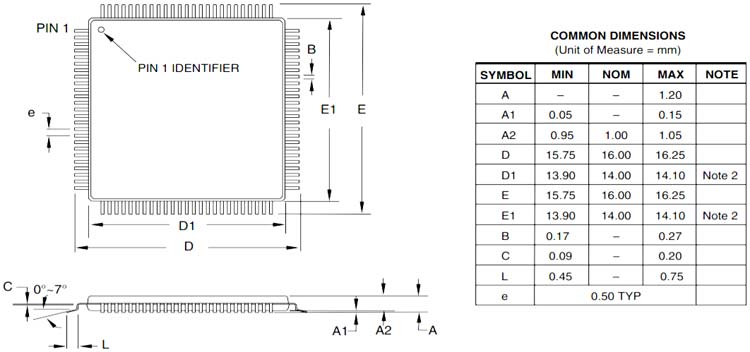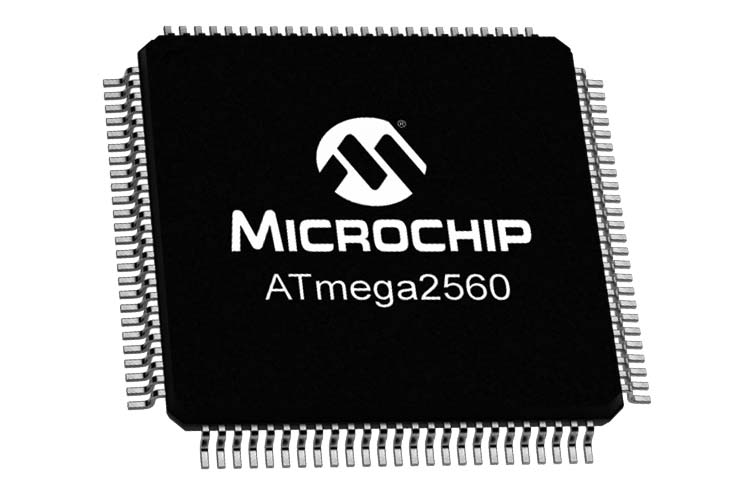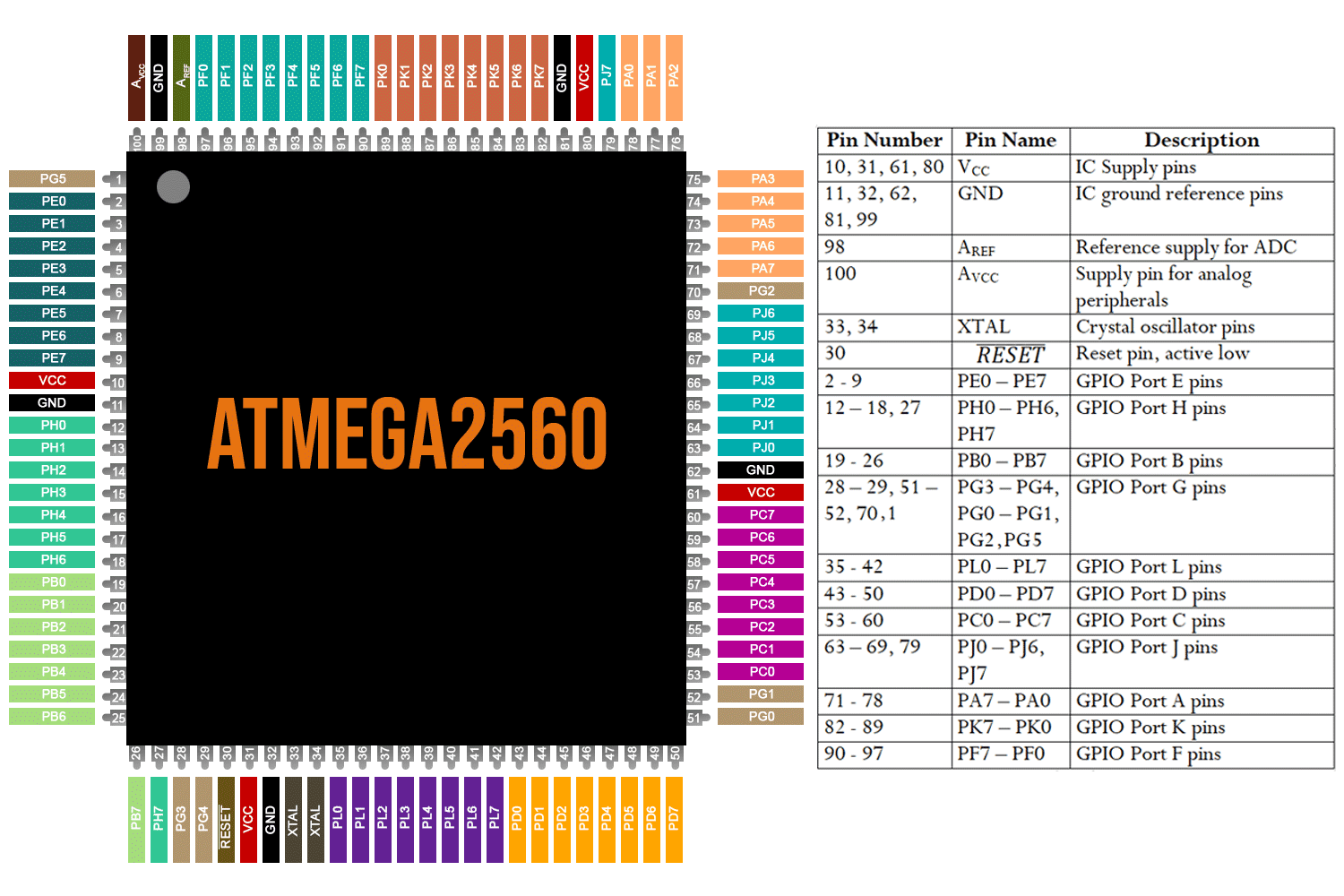ATMega2560 Microcontroller
The ATMega2560 from Atmel is an 8-bit low-power microcontroller that is found in the popular Arduino Mega development board. It is based on the 8-bit AVR RISC architecture and has 256KB flash memory, 8KB SRAM, and 4KB EEPROM. It also has a wide variety of peripherals, including timers, counters, PWM generators, a comparator, and ADCs. It can be clocked up to 16MHz with a 5V supply.
ATMega2560 Pinout Configuration
|
Pin Number |
Pin Name |
Description |
|
10, 31, 61, 80 |
VCC |
IC Supply pins |
|
11, 32, 62, 81, 99 |
GND |
IC ground reference pins |
|
98 |
AREF |
Reference supply for ADC |
|
100 |
AVCC |
Supply pin for analog peripherals |
|
33, 34 |
XTAL |
Crystal oscillator pins |
|
30 |
|
Reset pin, active low |
|
2 - 9 |
PE0 – PE7 |
GPIO Port E pins |
|
12 – 18, 27 |
PH0 – PH6, PH7 |
GPIO Port H pins |
|
19 - 26 |
PB0 – PB7 |
GPIO Port B pins |
|
28 – 29, 51 – 52, 70 |
PG3 – PG4, PG0 – PG1, PG2 |
GPIO Port G pins |
|
35 - 42 |
PL0 – PL7 |
GPIO Port L pins |
|
43 - 50 |
PD0 – PD7 |
GPIO Port D pins |
|
53 - 60 |
PC0 – PC7 |
GPIO Port C pins |
|
63 – 69, 79 |
PJ0 – PJ6, PJ7 |
GPIO Port J pins |
|
71 - 78 |
PA7 – PA0 |
GPIO Port A pins |
|
82 - 89 |
PK7 – PK0 |
GPIO Port K pins |
|
90 - 97 |
PF7 – PF0 |
GPIO Port F pins |
Features and Specifications
- 86 programmable IO lines
- Two 8-bit timer/counters, four 16-bit timer/counters
- 16-channel 10-bit ADC
- Four USART
- SPI serial interface
- On-chip analog comparator
Note: Complete technical details can be found in the ATMega2560 datasheet given at the end of this page.
ATMega2560 Equivalents
ATMega640, ATMega1280
Other Microcontrollers
How To Use ATMega2560?
The ATMega2560 is an 8-bit AVR microcontroller that comes with 86 programmable GPIO pins, PWM, ADC, and timer peripherals. It can be programmed using Atmel Studio and a dedicated programmer, or using another ATMega microcontroller and using the Arduino development environment. The easiest to use is the Arduino Mega board, which contains the ATMega3560, and can be programmed over USB from the Arduino software. The GPIO pins are also mapped internally to the peripherals like SPI, USART, and SPI. The ATMega2560 uses 5V logic levels, so it might not be compatible with 3.3V sensors and other peripherals. This is not a major limitation, it can be overcome using level shifting circuits. Thanks to its large number of GPIO pins, the ATMega2560 overcomes the limitations of smaller microcontrollers like the ATMega328P and allows it to communicate with more sensors and peripherals, while also leaving a large number of GPIO pins available for other tasks.
Applications
- Embedded electronics control
- Robotics, HID
- Mixed-signal electronics
2D Model and Dimensions
If you are designing a PCB or Perf board with this component then the following picture from the Datasheet will be useful to know its package type and dimensions.








